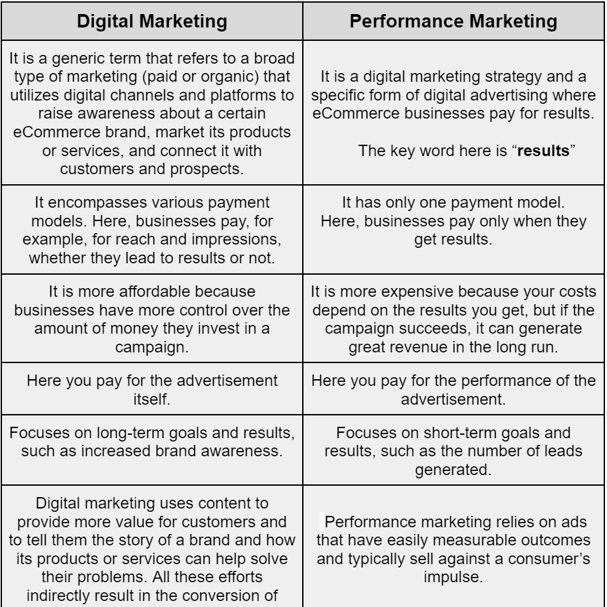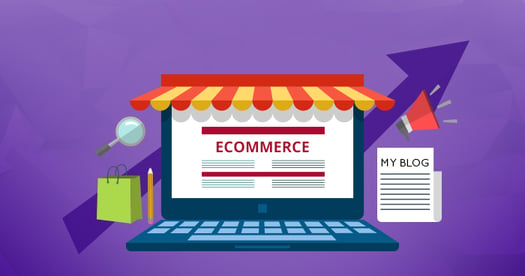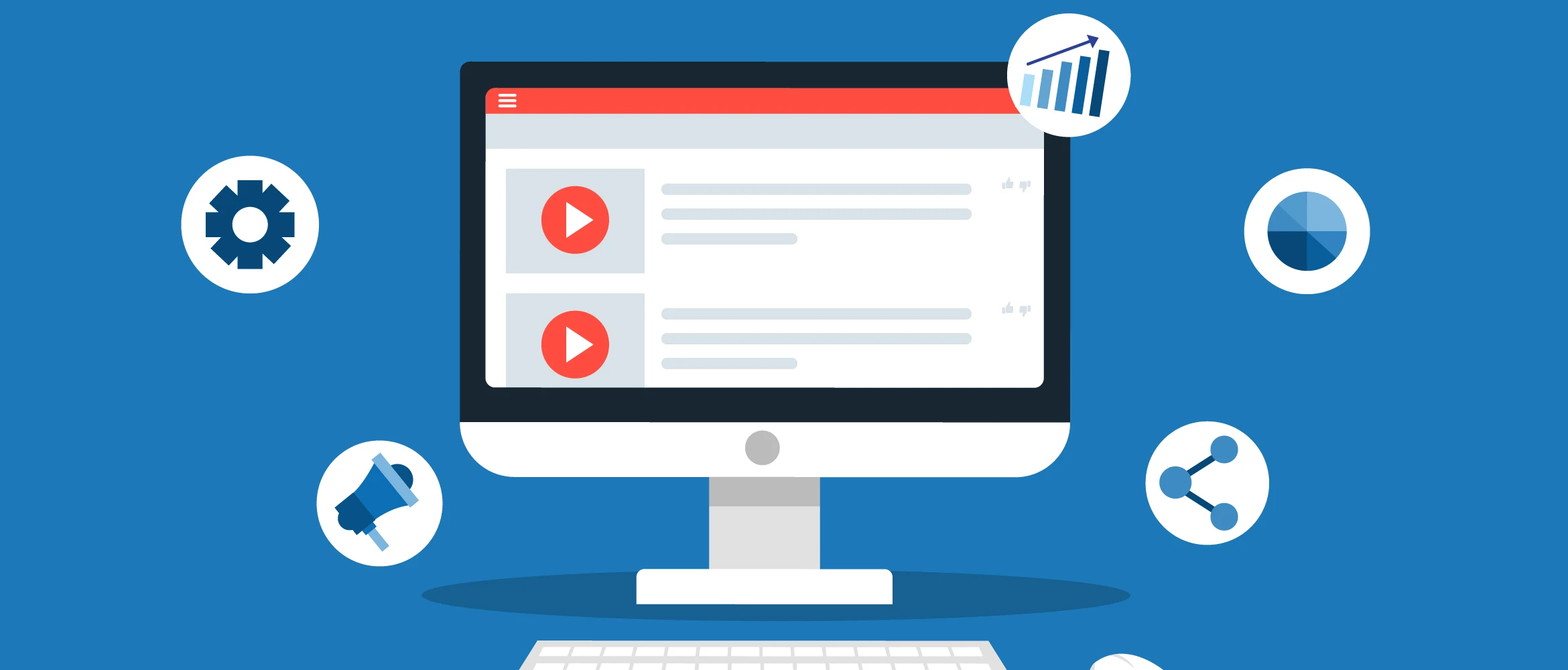Performance Marketing For eCommerce: Benefits, Channels, Metrics, and Best Tips
Throughout the past few years, the growth of digital marketing and advertising has reached an astonishing and unstoppable point. In 2022, global digital ad spending has reached more than $600 billion. As for the growth potential of the digital advertising market, it is expected to reach around $756 billion in 2024 and more than $800 billion in 2025 (Oberlo, 2022).
What is even more astounding is that the continuous growth of digital marketing and advertising is not occurring haphazardly. It is happening through the development of a number of digital marketing trends, strategies, and tactics that are revolutionalizing the idea of digital advertising.
One of these strategies is Performance Marketing. It is a strategy that perfectly fits the current need of eCommerce marketers to constantly measure and optimize their advertising results.
Keep reading this article to learn everything you need to know about what performance marketing is, what distinguishes it from digital marketing, how it can be used, what its benefits are, and more.
Table of content:
- What is Performance Marketing in eCommerce?
- Performance Marketing VS Digital Marketing.
- Best Metrics to measure Performance Marketing.
- Best channels to use for Performance Marketing.
- Benefits of Performance Marketing For eCommerce.
- Tips to have a successful performance marketing campaign.
What is Performance Marketing in eCommerce?
Performance marketing is a results-oriented digital marketing strategy. Everything from budgeting to decision-making is based on the measurable results of the advertising campaign.
To better illustrate, with performance marketing, your eCommerce business will pay the marketers or the advertising company only when the results of the campaign show that the predefined goals on which you agreed are met.
What is The Difference Between Performance Marketing and Digital Marketing?
You are probably now wondering what distinguishes performance marketing from other types of digital marketing. Well, you do not have to wonder anymore because we have brought you the answer to that.
Digital Marketing
- It is a generic term that refers to a broad type of marketing (paid or organic) that utilizes digital channels and platforms to raise awareness about a certain eCommerce brand, market its products or services, and connect it with customers and prospects.
- It encompasses various payment models. Here, businesses pay, for example, for reach and impressions, whether they lead to results or not.
- It is more affordable because businesses have more control over the amount of money they invest in a campaign.
- Here you pay for the advertisement itself.
- Focuses on long-term goals and results, such as increased brand awareness.
- Digital marketing uses content to provide more value for customers and to tell them the story of a brand and how its products or services can help solve their problems. All these efforts indirectly result in the conversion of prospects into customers over time.
Performance Marketing
- It is a digital marketing strategy and a specific form of digital advertising where eCommerce businesses pay for results. The key word here is “results”
- It has only one payment model. Here, businesses pay only when they get results.
- It is more expensive because your costs depend on the results you get, but if the campaign succeeds, it can generate great revenue in the long run.
- Here you pay for the performance of the advertisement.
- Focuses on short-term goals and results, such as the number of leads generated.
- Performance marketing relies on ads that have easily measurable outcomes and typically sell against a consumer’s impulse.
Performance Marketing VS Digital Marketing
Best Metrics to Measure Performance Marketing
We have already established the fact that performance marketing is all about measurable results and optimization. The first step in using performance marketing is to determine the exact measurable goal your eCommerce brand needs to achieve with the campaign. Here are a few metrics you could use to measure the performance and results of your campaign:
- Cost Per Impression (CPM): Impressions reflect the number of views your ad gets. With CPM, you pay for every 1000 views.
- Now let’s assume you are running a performance marketing campaign, and you agreed with the marketer on a certain amount of money for every 1000 impressions on your ad. In this case, you will not pay until you get your results, and your payment will be based on these results. For example, if the ad gets 2000 impressions, you will have to pay the marketer double the amount that you agreed upon.
- Cost Per Click (CPC): Here, you pay for the number of times your ad is clicked on. CPC is very suitable if your goal is to drive traffic to your eCommerce website.
- Cost Per Lead (CPL): With this metric, your payment depends on the number of times people sign up for something that you decide, such as signing up for a webinar or email newsletter. This metric can be very helpful if your goal is to generate leads that you can pursue and turn into conversions.
- Cost Per Sale (CPS): Here, you pay for every sales transaction that is driven by the ad. This metric is perfect when selling is your main goal.
- Cost Per Acquisition (CPA): This metric might seem similar to CPL and CPS metrics; however it is more general. Here, you pay when customers complete a specific action that you choose based on your predefined goals.
- If this action is making a sale, then it will be similar to the CPS metric.
- If this action is collecting the contact information of customers, then it will be similar to the CPL metric.
- However, it can include other activities, such as every time someone visits your website through the ad.
Check the Cost Per Acquisition (CPA) Complete Guide For Ecommerce
Best Channels to Use for Performance Marketing
1- Social Media

Research shows that the number of social media users across the world has reached more than 4.62 billion (Hootsuite, 2022), and is expected to reach 6 billion in 2027 (Statista, 2022).
As a performance marketer, these statistics should be of enormous significance to you because they reflect the endless number of opportunities you could use to reach your target audience. Social media offers you paid as well as organic opportunities to market your eCommerce brand and measure the performance of your marketing efforts.
You can start your performance marketing campaigns by paying for social media ads, and then the organic exposure will automatically follow when users start sharing your sponsored content.
Social media advertising can help you achieve a wide range of goals, such as raising brand awareness, increasing visibility, driving traffic to your eCommerce website, generating leads, optimizing conversion rate, and others.
Social media platforms that provide a large number of services for performance marketers include Facebook, Instagram, Twitter, Linkedin, TikTok, and Pinterest.
2- Native Advertising
Native Advertising is a form of advertising that blends seamlessly with the natural appearance of a website in a way that doesn’t make it look like an ad. In other words, instead of looking like an ad, this form of advertising aims at being less disruptive by imitating the environment in which it appears. Despite being labeled as “sponsored” or “promoted”, these ads are seamlessly integrated into your eCommerce website, your feed, your organic content, search results, and others.
Research shows that native ads create an 18% increase in purchase intent, and as a performance marketer, you want to make use of this 18%.
3- Display Advertising
Display ads are very noticeable. They appear, for example, on the side of your social media platform’s newsfeed and at the top and bottom of the news web page you visit.
Even though research shows that native ads receive 53% more views than traditional display ads and that ad blocking, also called banner blindness, has grown by 41% during 2021, as a performance marketer, you can still find some success in display advertising by targeting the right audience and using the right content, images, and videos.
4- Content Marketing

Content marketing and performance marketing should always go hand in hand. It is quite hard for your performance marketing campaign to succeed without good well-targeted content or for your content to be effective without measuring and optimizing performance and results.
Research shows that 82% of marketers are actively investing in content marketing; therefore, as a performance marketer, you should be included in this percentage, and you should start working on the content strategy of your eCommerce brand.
5- Search Engine Marketing (SEM)
This performance marketing channel allows you to display your ads on search engines like Google, Bing, and Yahoo. SEM can be leveraged either organically using Search Engine Optimization (SEO) or through paid advertising.
6- Affiliate Marketing
Affiliate marketing is one of the easiest ways to implement performance marketing, and it can occur across different channels. It involves partnering with an affiliate, such as an influencer, blogger, YouTuber, or incentive site. This affiliate promotes the products of your eCommerce store on their own channels and platforms and gets paid once they deliver you the agreed-upon results.
Note that: It is always more effective for eCommerce businesses to use an omnichannel approach. In other words, you should focus on spreading your performance marketing campaign across all available channels and platforms in the most seamless way possible.
Omnichannel marketing does not just require you to synchronize between all channels and platforms; it also requires you to integrate all devices. This means that, as a performance marketer, you have to include mobile devices and extend your performance marketing efforts to mobile commerce.
Benefits of Performance Marketing
The future of digital marketing and advertising looks more and more promising every day, and its strategies are developing unstoppably with a growing number of benefits. Here are some of the most important of performance marketing:
-
Measure and optimize performance
The first and most obvious benefit of performance marketing is that it is completely measurable, and when you can measure, you can optimize. There is no room in today’s world for marketing to succeed without optimization, which is what performance marketing allows us to do.
In this type of marketing, measuring is not an option. It is a necessity because, as we mentioned before, your payment will be determined based on the campaign’s result. While getting these actual results, you will be delivered a complete evaluation of your performance on a silver platter. Your job as a performance marketer is to take this evaluation, calculate your return on investment (ROI) and take active measures toward optimization.
-
Pay for results
Another clear advantage of performance marketing is the payment model. Here, you pay for results. This lowers the risk of blindly wasting your advertising money on ads that have unknown future.
Therefore, we can say that performance marketing is budget-friendly and suitable for eCommerce marketers who do not want to take high risks and wants to proceed in advertising knowing that their money is well-spent.
-
Better planning and budgeting
Pursuing performance marketing forces you to well-plan for your campaign. To illustrate better, before starting a performance marketing campaign, you have to set the goal you want to achieve and the metrics you will use to measure it. Starting by setting goals and metrics is the key to any successful planning.
This also makes it easier to set your budget. In performance marketing campaigns, your budget will be determined based on your goal. So, for example, when you decide that your goal is to get 10,000 new visitors to your eCommerce website, then choose cost-per-click (CPC) as your metric, identifying the exact budget after that will be an easy road for you.
Tips to Have a Successful Performance Marketing Campaign for Your Ecommerce Store
It is clear from all that we discussed about performance marketing for eCommerce that it is not something you want your business to miss. So, here are a few tips on how to launch a successful performance marketing campaign for your eCommerce business:
- Take all the time you need to determine your initial goal because your whole performance marketing campaign will depend on it.
- Leverage the results you get from your performance marketing campaigns, and do not miss out on any opportunity for optimization.
- Always focus on customer segmentation because neither the results nor the optimization you get from performance marketing campaigns will mean anything if you are marketing to the wrong audience.
- Benefit from the data you gather from performance marketing campaigns in personalizing your customers’ experiences.
- Use automation.
Speaking of automation, Converted.in offers you one of the best marketing automation tools that will help your performance marketing campaigns succeed by:
- Segmenting your target audience.
- Personalizing and automating your ads, SMS, and email marketing campaigns.
Book your Demo now and start working on your performance marketing campaign.
 By
By

